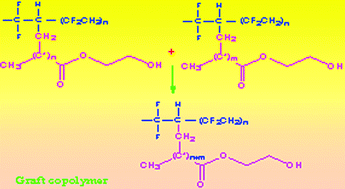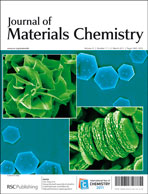We report the graft copolymerization synthesis of novel high dielectric constant HEMA (2-hydroxyethylmethacrylate)-graft-poly(vinylidene fluoride) (PVDF) copolymers for potential applications in high energy density capacitors. In the present study the graft copolymerization reaction was introduced by irradiation (electron beam) treatment of the PVDF polymer powder. The chemical changes in the PVDF polymers after HEMA grafting were monitored and the results were evaluated by FTIR, DSC, TGA and contact angle measurement. An analysis is presented on the effectiveness of this approach as a function of electron beam operating variables including radiation dose, reaction time, reaction temperature, monomer concentration and effect of solvent. The PHEMA-g-PVDF copolymers demonstrate improved dielectric properties such as high dielectric constant, lower leakage and low dielectric loss as compared to pristine PVDF. Correlation of dielectric properties with the graft copolymerization reaction mechanism was discussed.

You have access to this article
 Please wait while we load your content...
Something went wrong. Try again?
Please wait while we load your content...
Something went wrong. Try again?


 Please wait while we load your content...
Please wait while we load your content...